Last week, I told a group of nuclear physics colleagues that reaching out to middle school students would be a good investment of our effort. Why? Because we need to reach these students before they arrive in high school, where girls and minority students start to fall out of the pipeline that leads to careers in physics, engineering, computing and mathematics.
In my field, physics, only about one-fifth of the bachelors’ degrees are awarded to women. Less than 5% of bachelors’ degrees in physics are earned by black students. While women and minority students face specific obstacles at the college level that can discourage them from earning degrees in physics and other mathematical fields, the underrepresentation of these students begins in high school and can be seen in Advanced Placement courses in calculus, physics and computer science, as shown below.
The first plot shows the underrepresentation of black and Hispanic students in earning bachelors’ degrees in mathematical fields in Florida’s State University System (SUS). The red bars show the percentages of black and Hispanic students among Florida’s public K-12 students (22% black, 33% Hispanic). The bachelor’s degree numbers are given for the major CIP codes (14 for Engineering, 11 for Computing, 27 for Math and Statistics), except for physics, which is CIP code 40.0801. The numbers of degrees are taken from the Florida Board of Governors’ Interactive University Database. The most notable number is that in the 2015-16 academic year only 4.2% of the bachelors’ degrees in physics in the SUS were awarded to black students.

However, a similar plot for 2017 AP exam takers in Florida for calculus, physics and computer science shows that the road to the severe underrepresentation of black students in the mathematical fields doesn’t begin in college. The situations in these high school courses are simply awful.

The next plot shows the situation for women in these same fields, both at the bachelor’s degree level and for AP exams in calculus, physics and computer science. The underrepresentation of women certainly intensifies in college – and that is something that every science and math professor should be working on (especially the professors who are men). But the sorting of women out of the mathematical fields clearly begins in high school.
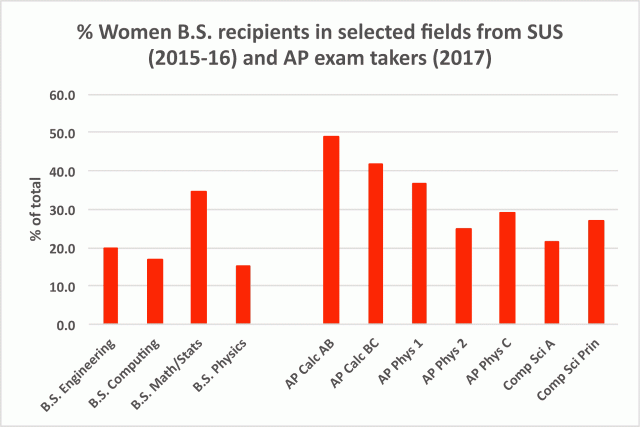
College is clearly too late to begin addressing these issues. High school is too late as well. Middle school is where those of us in the scientific community should be starting. If you are a science or math professor and you think this is not your problem, you need to take a look in the mirror and think again – the pipeline in your field is your responsibility and not somebody else’s.
I’ll close with several pictures from the Nuclear Medicine and Science Camp for rising 9th graders held on the campus of FSU’s Panama City campus at the end of July.


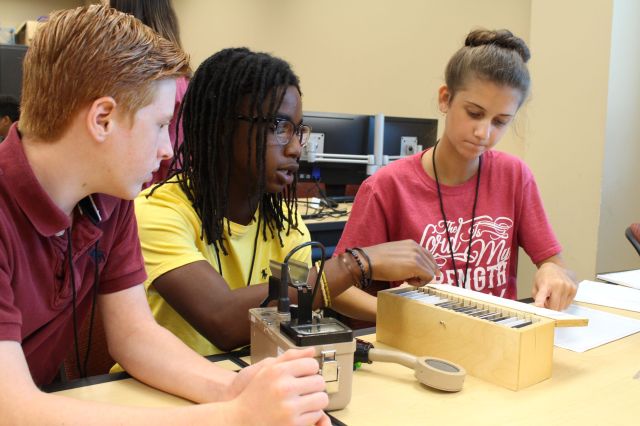
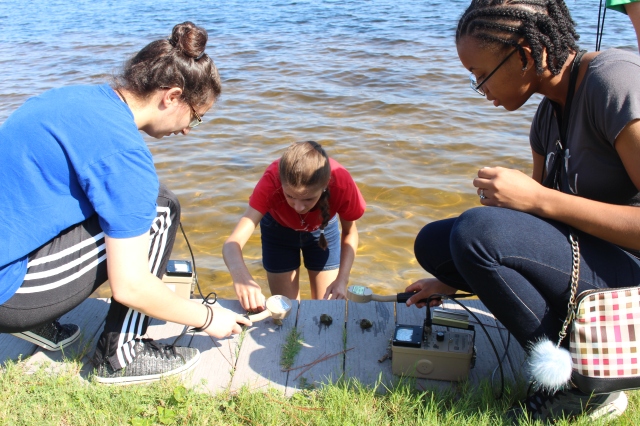
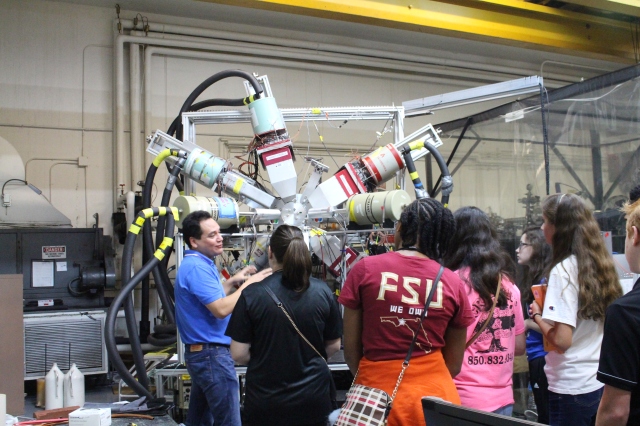
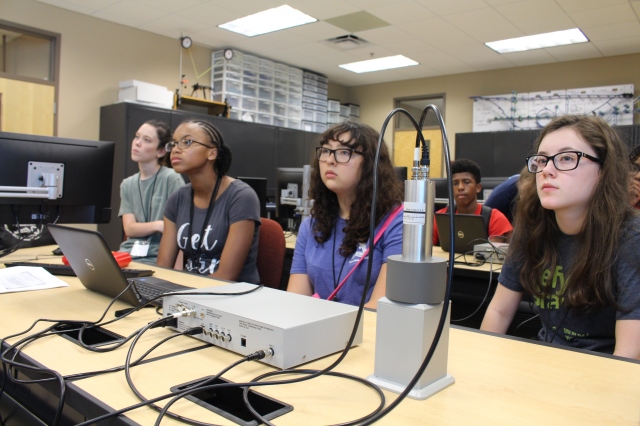

Pingback: Dual enrollment, early college, and the engineering and physics pipelines: A map of the eight years from 9th grade to bachelor’s degree | Bridge to Tomorrow